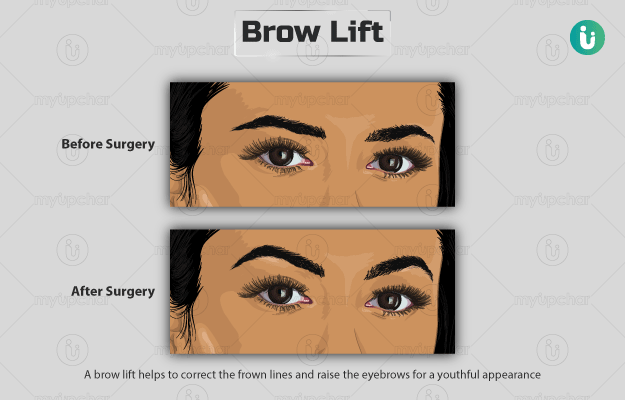Summary
A brow lift is performed to improve facial appearance in individuals with sagging brows, creases and furrows on the forehead, excess skin above the eyes, and wrinkles on the forehead and nose bridge. The surgery is performed either under general anaesthesia (you will be asleep during the surgery) or a combination of intravenous sedation and local anaesthesia (you will be awake during the surgery).
The procedure involves trimming of extra skin, adjusting muscles and tissue beneath the skin, lifting the skin of the forehead, and elevating the eyebrows. After the surgery, you will be discharged either on the same day or after a short hospital stay. The results of the surgery are visible immediately after the postoperative swelling subsides. You can restart normal activities and work two weeks after the surgery.










































